The artist's studio
The last studio occupied by Mario De Luigi (1971 - 1978) was in Palazzo Fortuny, then still headquarters of the UIA (Università Internazionale dell'Arte). After the painter's death and before the studio was vacated, Marie-Louise Bron Curtis photographed the three rooms where the artist's presence still lived on.
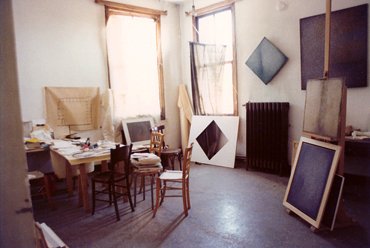
Mario Deluigi's (1971-1978) last studio in Palazzo Fortuny
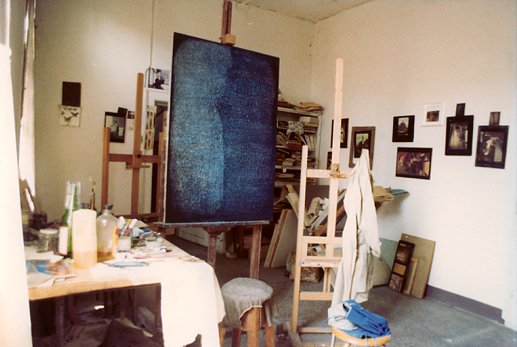
In the entrance hall, where Deluigi loved to paint, his last and unfinished work stands upon an easel.
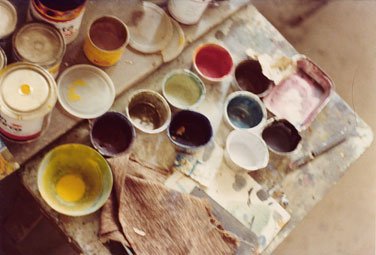
On the table, near the colours.
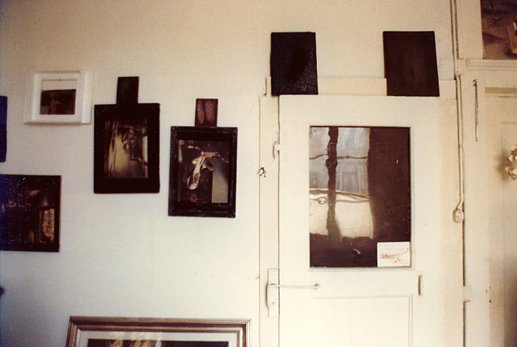
On the walls, between his own works, a few reproduction of work by Vermeer are hung upside down
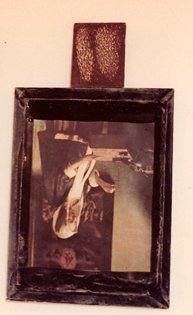
The figurative - narrative aspects of Vermeer's work did not matter to Deluigi so much as that painter's experiments with light.
Hanging Vermeer's pictures upside down, and keeping representational values at bay for a moment, made their interpretation in terms of light all the easier.
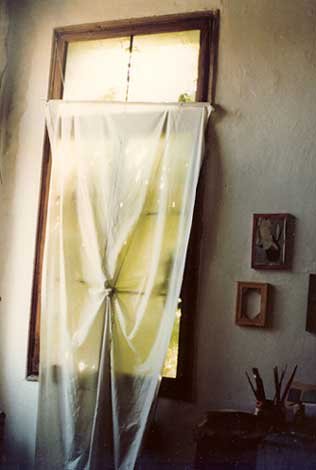
In this way, a bridge was created between the 17th century Dutch painter and Deluigi's quest within the abstract.
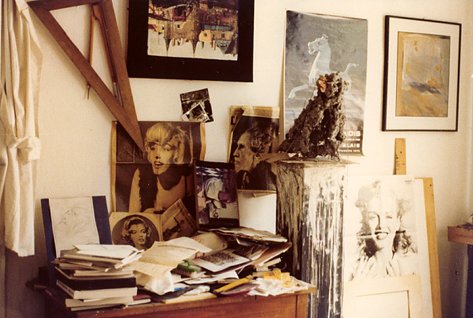
On a small table near the window are glimpses of two 20th century characters who distinguish his life: the noble but inexorable ageing of the poet Ezra Pound and the inviolable feminine beauty of Marilyn Monroe.
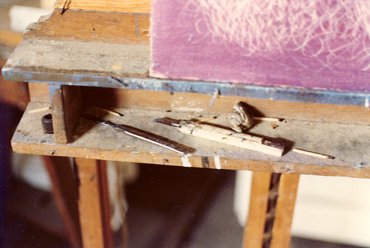
He painted less frequently in the second room but here, on an easel, are the tools he used to scratch and scar his work in progress: razor blades, paper cutters and scalpels.
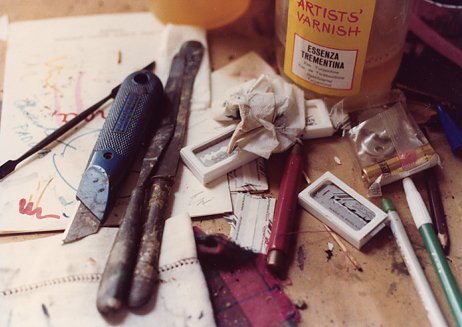
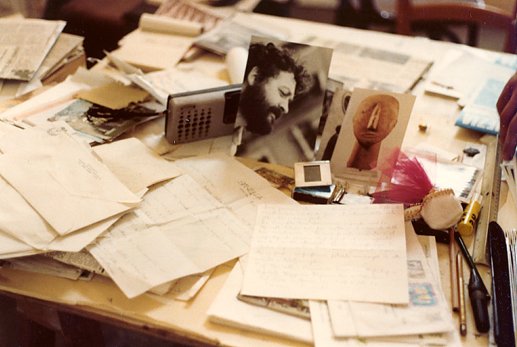
The third room was used for writing and receiving friends, students and collectors. On the table there are letters, a portable radio, a photograph of a small Cycladic sculpture and another of his son Filippo.